Self Control
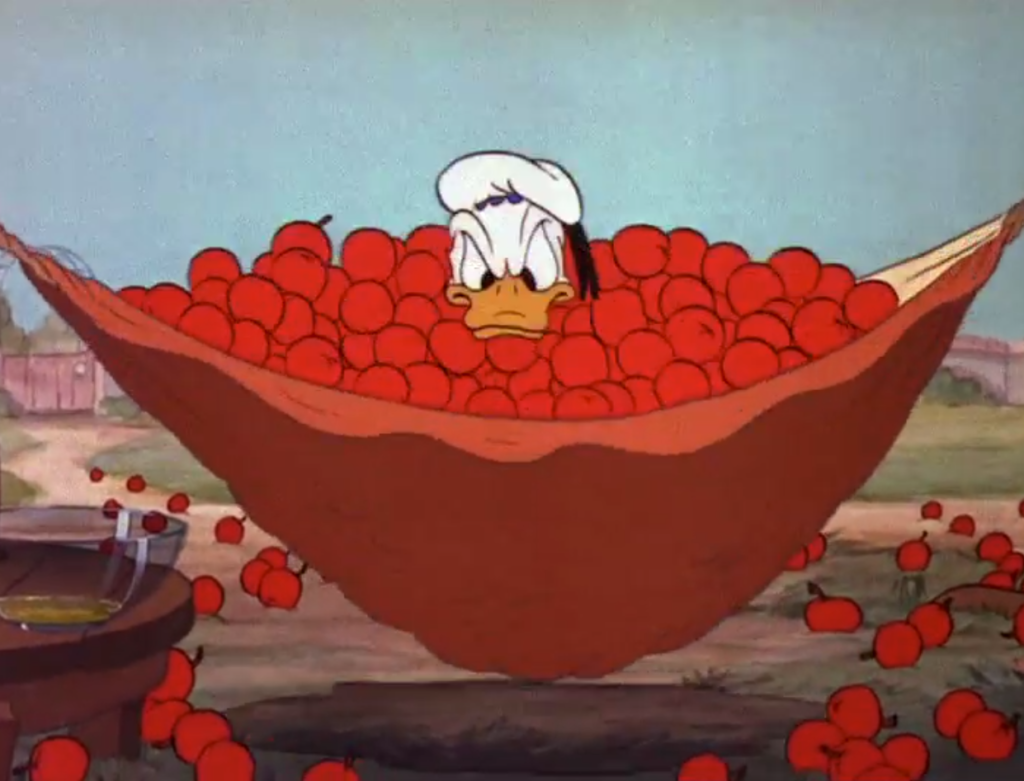
February 11, 1938 available in The Chronological Donald Duck Volume 1
I usually love the Donald Duck shorts that focus on his personality, since that is Donald’s Achilles’ heel . This short is about Donald trying to rein in his temper with the help of a radio personality. Naturally this means a series of situations designed to test Donald’s patience.
It’s ok… a bit of a “phone in” from the plot department. Just Donald getting angry about generic things while he tries to enjoy his time in his hammock.
Boat Builders
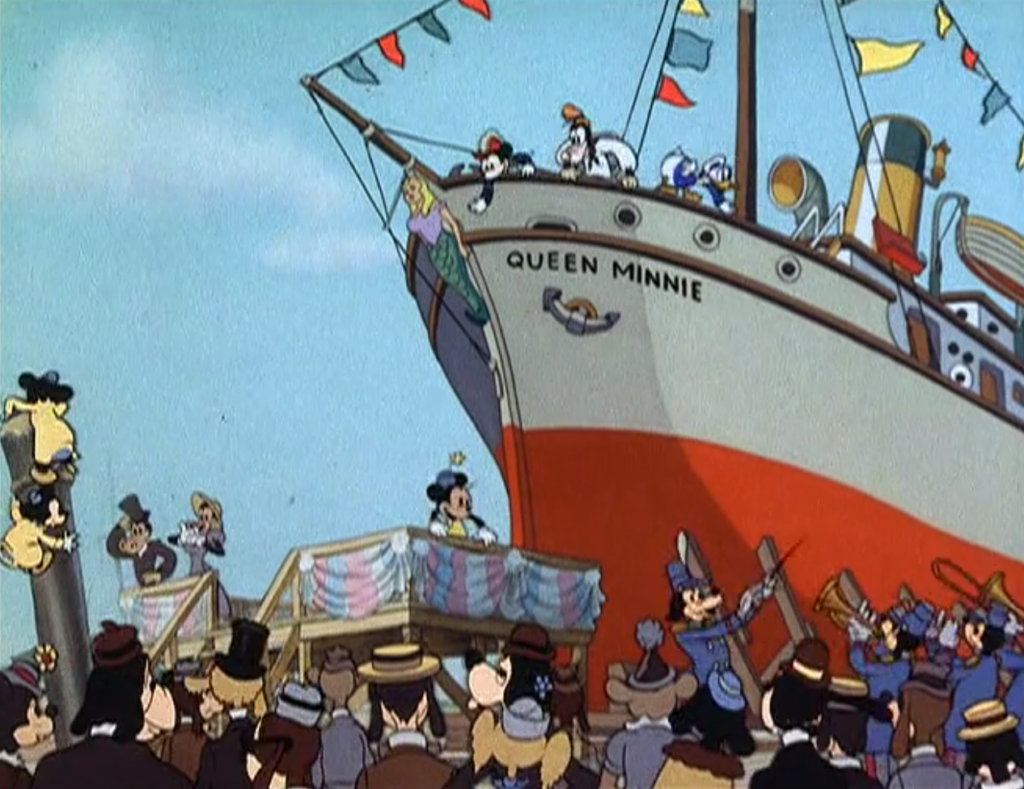
February 25, 1938 available in Mickey Mouse In Living Color
Mickey, Donald, and Goofy receive a mail-order boat-in-a-box. It ends in disaster, of course, but it’s the journey that is really engaging. There’s a certain endearing anticipation of disaster in watching over-confident amateurs attempt what is clearly meant to be a skilled task.
Even more so when two of those amateurs are Goofy and Donald.
The gags are thick on the ground and a decent amount of fun. It’s a tight little short.
Donald’s Better Self
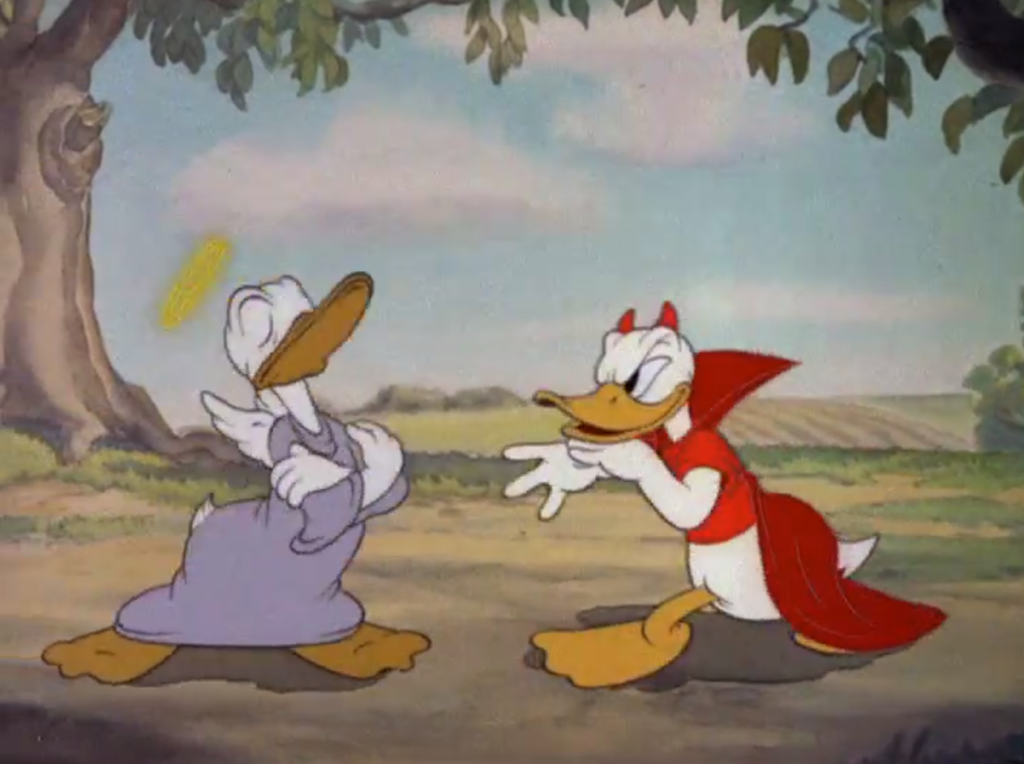
March 11, 1938 available in The Chronological Donald Duck Volume 1
See, this is the Donald Duck short we all truly want. In a brilliant artistic move, they chose to animate Donald, his conscience, and his sinful nature as separate entities. I don’t want to say this is the first time this has happened, but it is certainly early in cinematic history for this trope to be employed.
This is a good short that works solidly within it’s dramatic parameters. I kept feeling like it should reach for more. Way too much time was spent on Donald’s smoking hangover. But it was still delightful.
Moth and the Flame
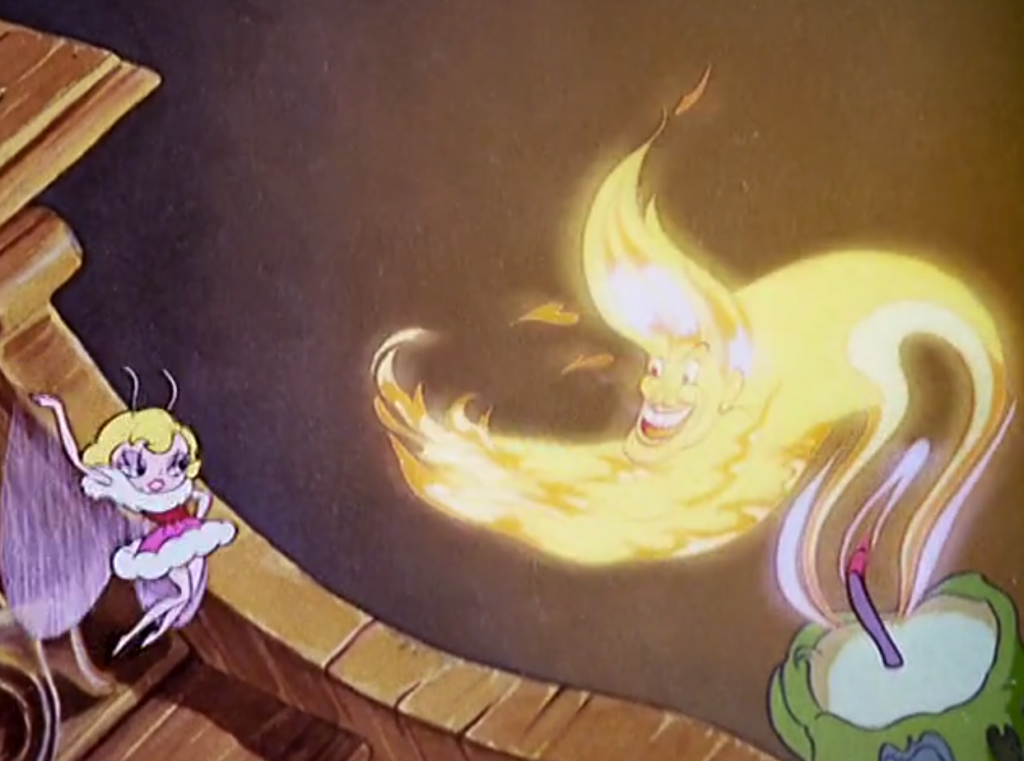
April 1, 1938 available in More Silly Symphonies
This is a fun Silly Symphony that plays delightfully (and beautifully) with the concept of moths and fabric and light. A moth couple get into a clothier shop and lay waste to the place before a an anthropomorphic flame enamored with the lady moth and threatens to burn the place down.
This is great. It’s visually fantastic, the narrative is solid, the visual and musical gags work wonderfully together, its a great piece.
Donald’s Nephews
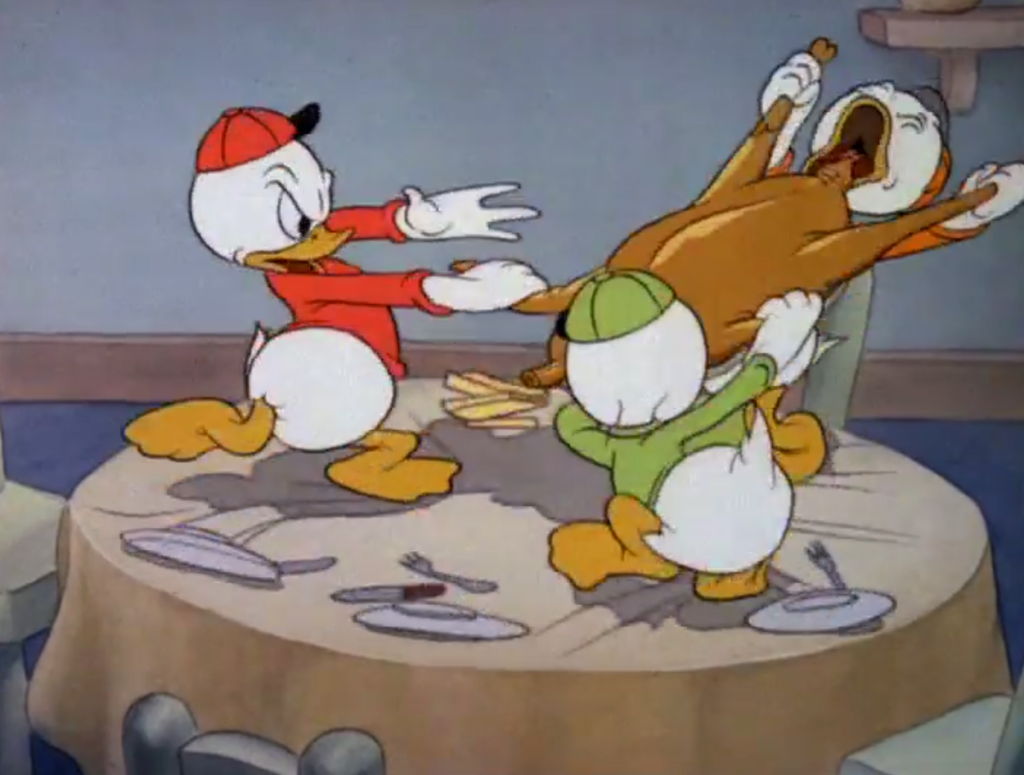
April 15, 1938 available in The Chronological Donald Duck Volume 1
Ah, the first appearance of Donald’s nephews Huey, Dewey, and Louie!
Donald’s sister, Dumbella (her real name!), sends her hellion children to their Uncle Donald’s house in retaliation, I assume, for some childhood grudge or injustice. In desperation, Donald consults his handy child training manual to navigate his nephews, who are simply monstrous all the way through.
This is a decent one. Donald gets to sort of be the good guy, largely in contrast to his terrible nephews. There is little narrative, it slides quickly from one comic scenario to the next, relying on the training manual to smooth out the transitions.
Mickey’s Trailer
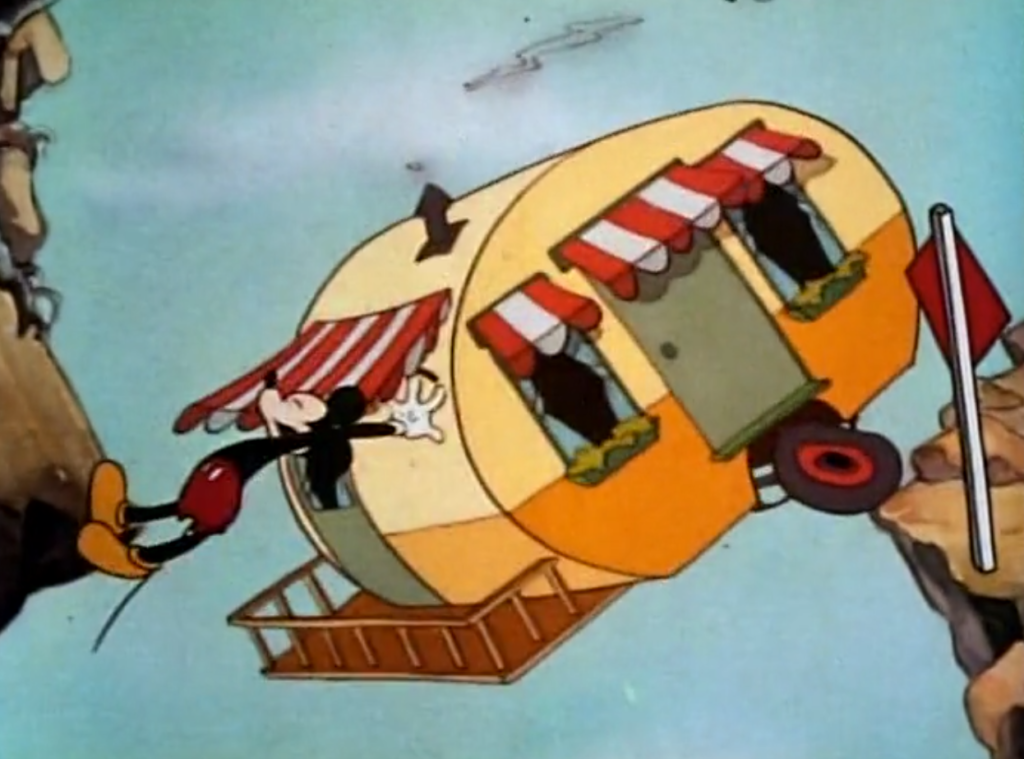
May 6, 1938 available in Mickey Mouse In Living Color
This is a really great slapstick, crazy short in which Mickey, Donald, and Goofy are out and about in a trailer. Goofy, being who he is, leads them to unintended danger as he navigates the trailer through a mountain pass.
This is good for the gags. There is no narrative to speak of, but it’s fun for the slapstick comedy and the very subtle commentary on the enormously rapid pace of automation in a world that had only known the Model T for a decade, but saw all of life being transformed with this new technology.
Wynken, Blynken & Nod
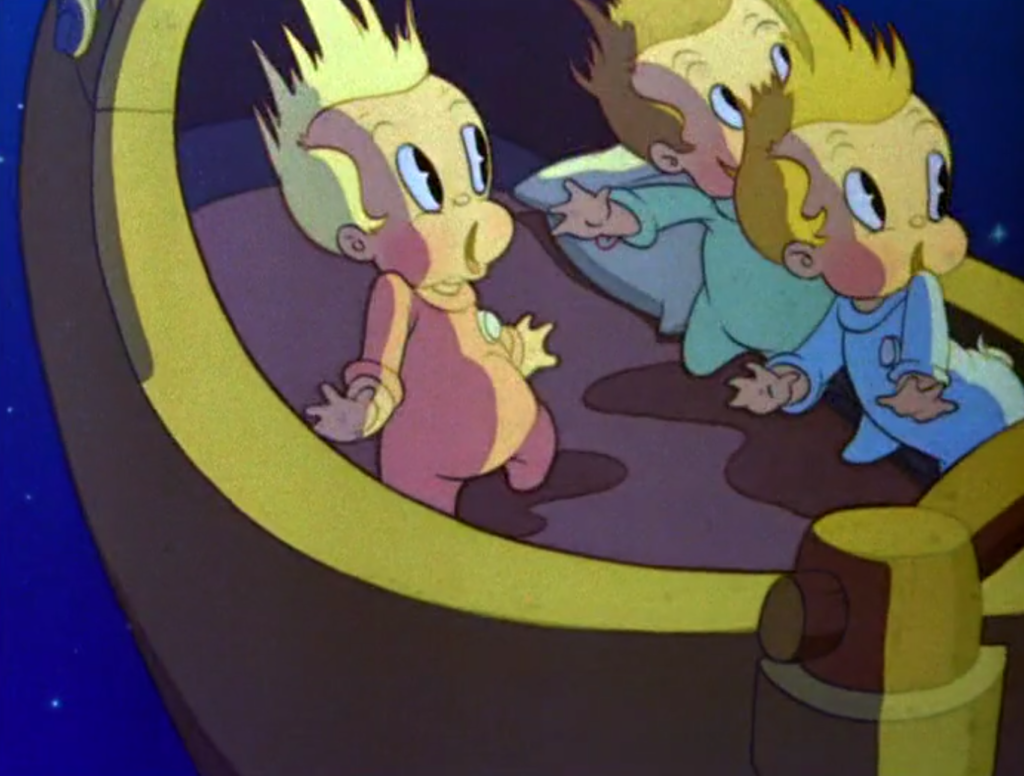
May 27, 1938 available in Silly Symphonies
This is certainly a classic. Inspired by the Eugene Fields poem, this is a very sweet cartoon about the three cherubic titular characters on their shoe-ship voyage. There is no plot to speak of, it’s just the three adorable children on their little journey through schools of star fish, in their encounters with a comet, tossed about in a storm.
There’s a simplicity and sweetness to this short that is both admirable and quite old-fashioned. But I suppose you wouldn’t be watching something like this if you didn’t find some value in the old-fashioned.
Polar Trappers
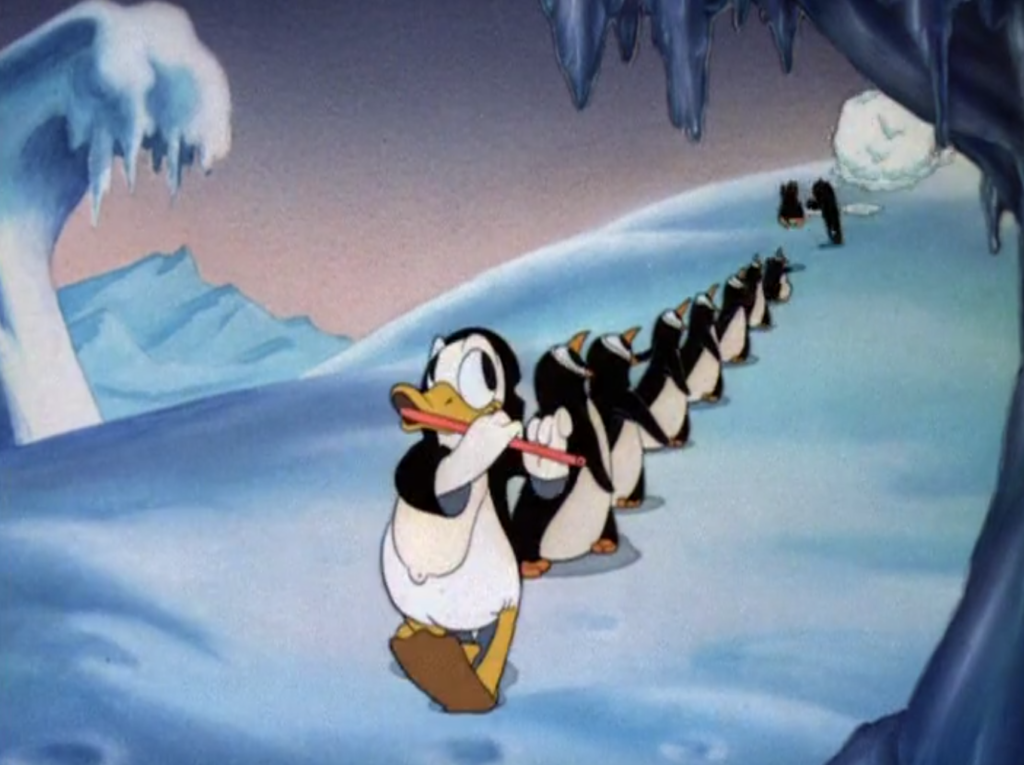
June 17, 1938 available in The Chronological Donald Duck Volume 1
Donald and Goofy are trappers in the Antarctic region (I assume since there are penguins) looking to hunt penguins and walrus. Aside from the somewhat disturbing concept of Donald trying to mass-slaughter a bunch of penguins while masquerading as a penguin himself, this is fine. It’s mostly well-executed slapstick in search of greater meaning.
Good Scouts
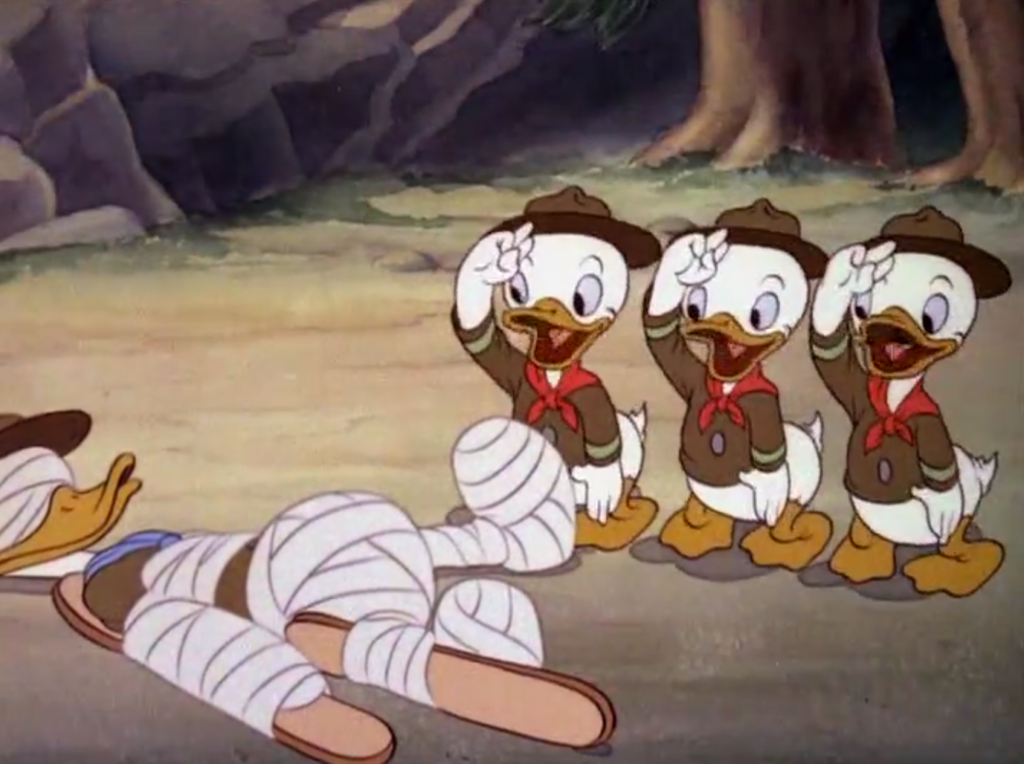
July 8, 1938 available in The Chronological Donald Duck Volume 1
This marks the real introduction of Huey, Dewy, and Louie. In their first short (Donald’s Nephews), they were little hellions that Donald was trying desperately to tame. Here, we start to see them as earnest children in conflict with their uncle.
The duck family is on a scout expedition in which things go wrong (what things? It hardly matters) Donald plays a prank on his nephews and it gets him into trouble. It’s fine. Not bad. Not great.
(I wonder how many times I’m going to have to write that summary in the coming years)
The Fox Hunt
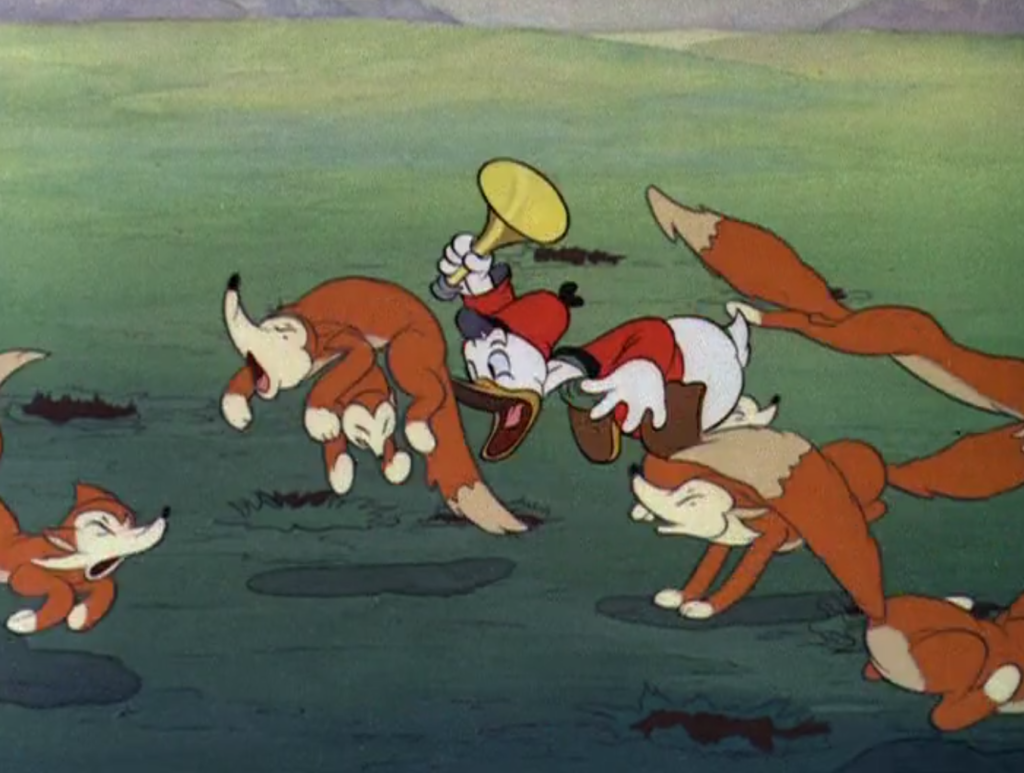
July 29, 1938 available in The Chronological Donald Duck Volume 1
I feel like Goofy and Donald are bringing all the boys the yard for Disney in 1938. This is fine, it’s basic slapstick organized around the concept of a fox hunt. Goofy finds his gags in his relationship with his horse, while Donald chases the fox with his usual incompetence.
This is ok. It feels like we’re settling into a routine with the character-based shorts. At this point, the Silly Symphonies are far superior as they are untethered from character expectations.
The Whalers
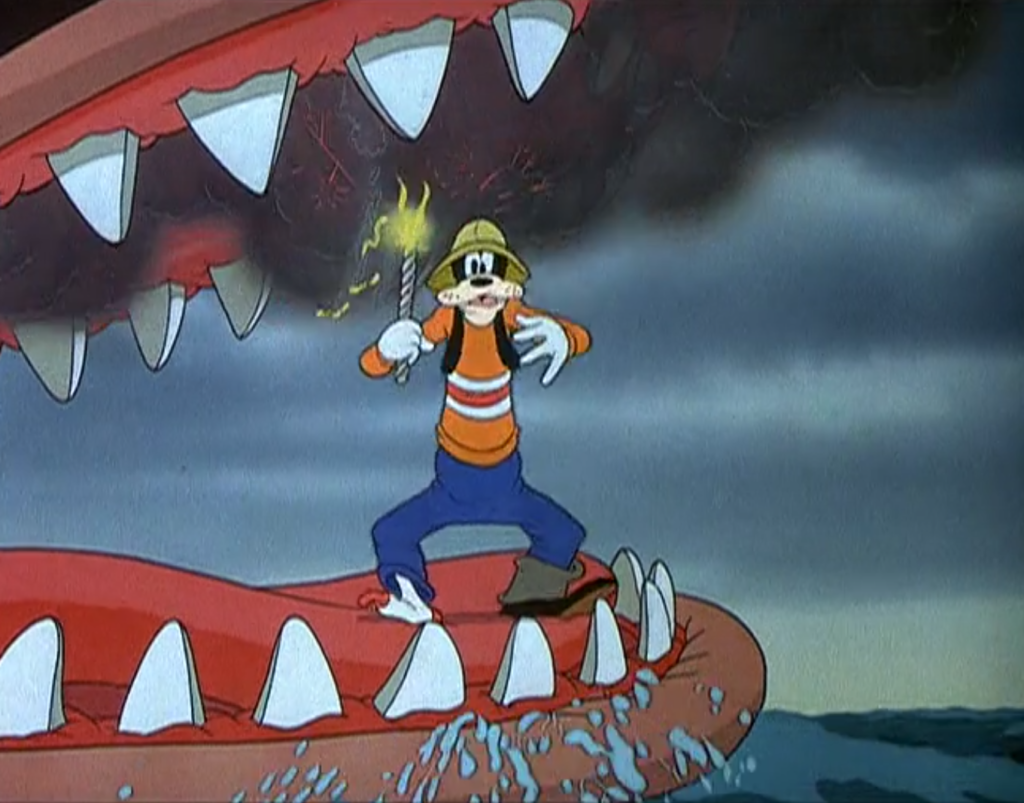
August 19, 1938 available in Mickey Mouse In Living Color
I don’t get this one. There’s a solid minute-long gag in which Mickey can’t throw a load of waste-water overboard. But… why? Why does this not work? Is there something in the wind? On the boat? Something about the water? We never discover the answer.
This is followed by a gag in which Goofy is trying to shoot a canon at a whale. I dunno about this. It feels a little too much like a tech demo for Pinocchio (which would debut a mere 18 months later). The whale in this looks a lot like Monstro and the shots they chose seem to be a first attempt at what Disney would ultimately accomplish in full in Pinocchio.
Mickey’s Parrot
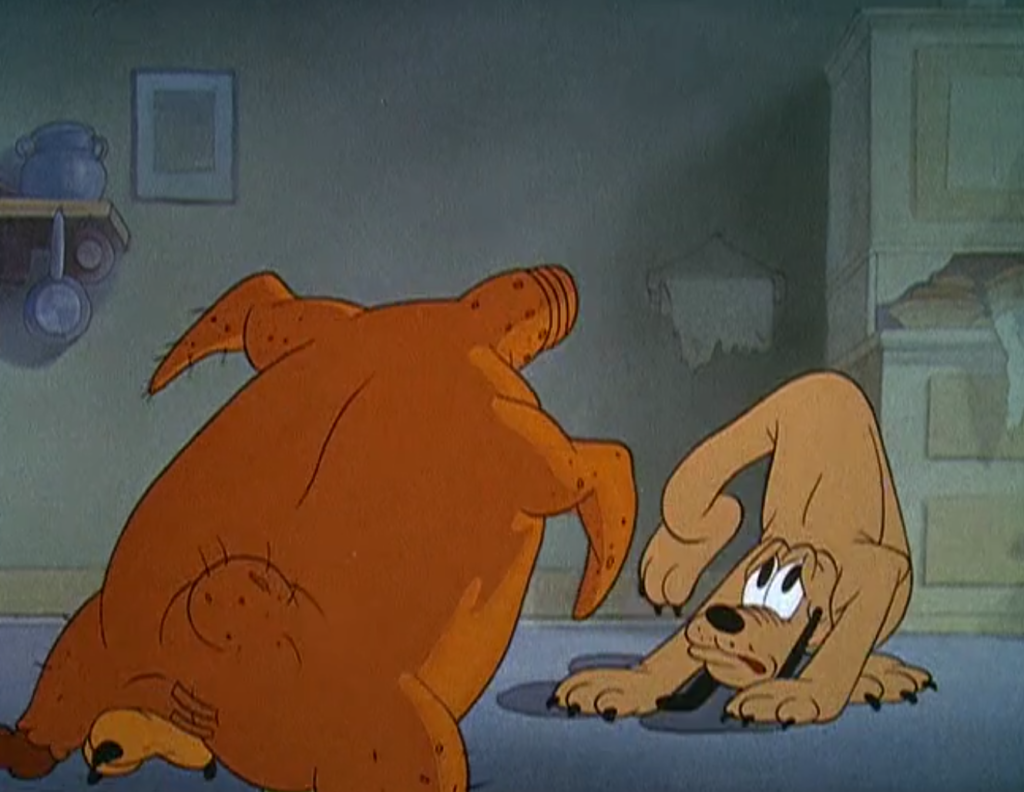
September 9, 1938 available in Mickey Mouse In Living Color
We’re just neck deep in classic Disney shorts here in 1938. As a piece of comedy, this starts out as a classic misdirection / misunderstanding situation in which Mickey and Pluto mistake a lost parrot for an escaped killer.
This is a solid piece of comedy with Pluto getting all the best moments because apparently whoever was drawing Pluto at this time was just having a ton of fun. Naturally, the parrot gets the better of Pluto in an extended series of good gags and jokes & everything turns out ok in the end.
Brave Little Tailor
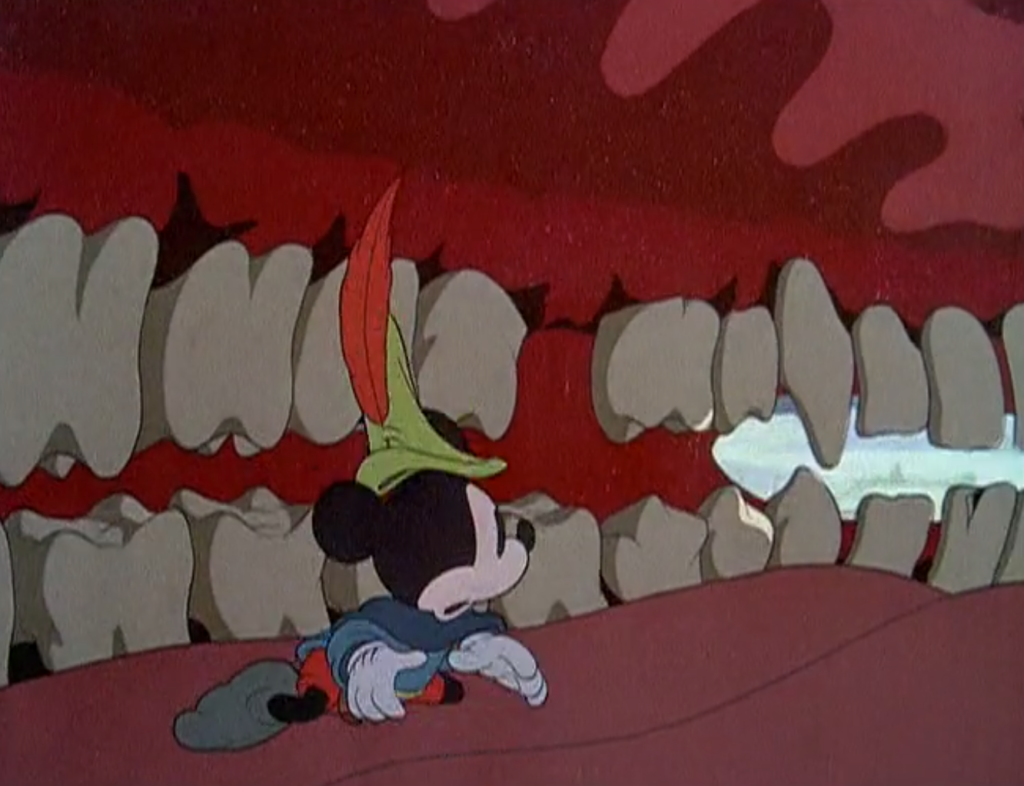
September 23, 1938 available in Mickey Mouse In Living Color
This is one of the singular great Mickey Mouse shorts. Mickey kills 7 flies with one blow of his fly swatter and his story is amplified and misconstrued to turn him into a giant killer. It combines Mickey’s nervous and timid nature with his bravery to rise to a challenge (and his willingness to do anything for Minnie).
It is beautifully animated with lots of wonderful giant gags (smoking a haystack, munching on dozens of pumpkins). It also exemplifies the best of Disney animation in this era, which is an ability to deliver fantastic images and stories in the only format where they could possibly be realized.
In an era of computer generated imagery, we take for granted that filmmakers of previous generations couldn’t show any story in a live action film. They had severe limitations on what they could technically portray. Disney animation often self-consciously looks for stories in which animation is the ONLY possible option for telling that story. The scene in which Mickey is inside the giant’s mouth is such a scene. Impossible to even begin to comprehend in a live-action film in 1938, the animators deliver stunning imagery imagining what it would be like to be inside a giant’s mouth, with detailed teeth, tongue, and chewing motions. It’s a unique and detailed vision of peril only available through the medium of animation.
Farmyard Symphony
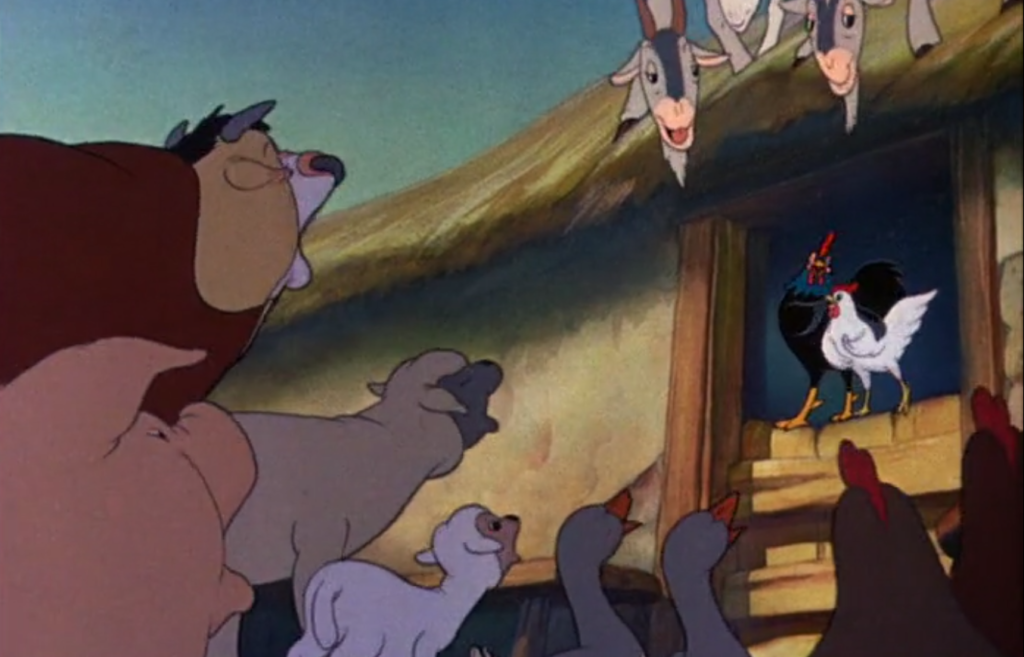
October 14, 1938 available in Silly Symphonies
This short speaks perfectly to Walt Disney’s desire to blend low and high art. It’s a set of lovely scenes with all the animals in the farm, set to a menagerie of classical music. For the (excuse the phrase) country bumpkin crowd, Walt would have seen this short as reaching them where they are, but bringing the high culture of classical music to them. For the high-class crowds, it gives them an excuse to enjoy slapstick along with a dose of the classics.
This is something that Looney Tunes would really lean into many years later. Keep in mind that What’s Opera Doc is still 19 years away. This use of classic music in a slapstick cartoon is still new and novel. This is the precursor to Fantasia and you can feel it in every gorgeous frame.
Donald’s Golf Game
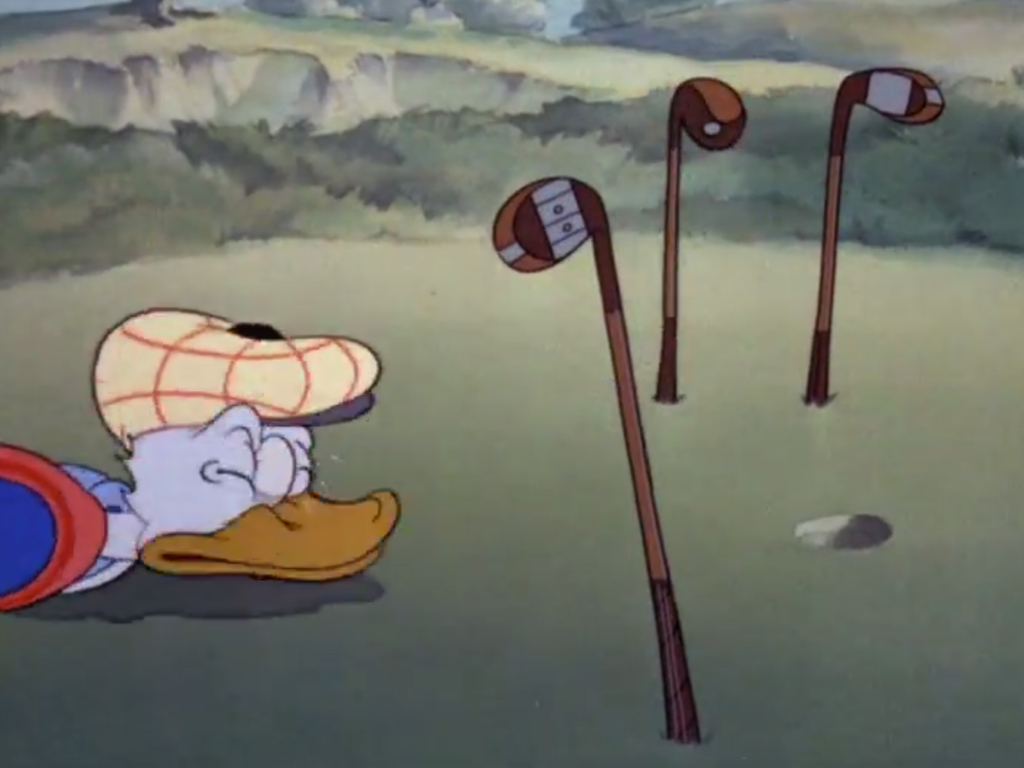
November 4, 1938 available in The Chronological Donald Duck Volume 1
Man, Donald is such a jerk. It’s probably why he makes for such good comedy, he’s even mean to the lovely little birds signing their morning songs. And such a jerk to his nephews in these early shorts!
Which is why, I suppose, we don’t mind it when his nephews get the better of him. In this short, they play a series of tricks (involving prank clubs and balls) on Uncle Donald while he’s trying to play golf. We would feel bad for any other character, but Donald is such a relentless ass that we’re pretty much OK with all the bad things that happen to Donald.
Ferdinand the Bull
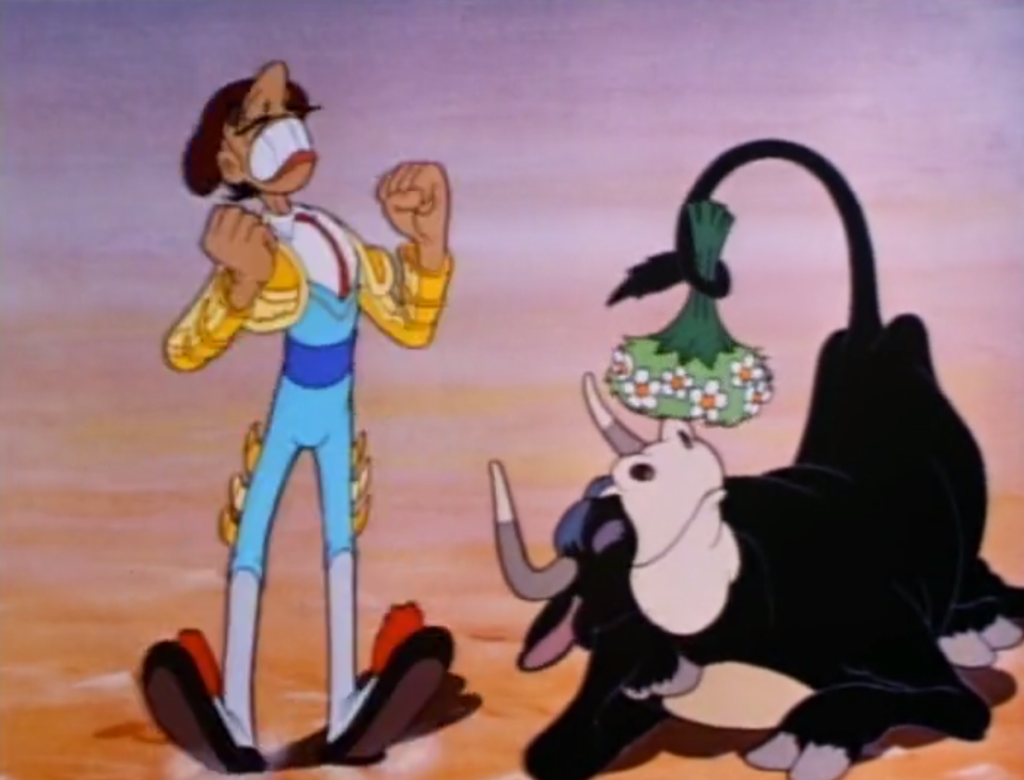
November 25, 1938 available in Disney Rarities
I’m getting tired of saying that things are classics. But Ferdinand the Bull is such a classic that it’s hard to avoid. This story of a young bull who despises the masculinity of bull fighting is such a lovely story, so lovingly told, and so deeply loved by audiences it’s hard to find another word for it.
The core story is wonderful, the narrator is fantastic (his storytelling voice is so rich, nearly poetic), the animation gives us some really memorable images cement our image of Ferdinand under his favorite cork tree, just smelling the flowers.
Merbabies
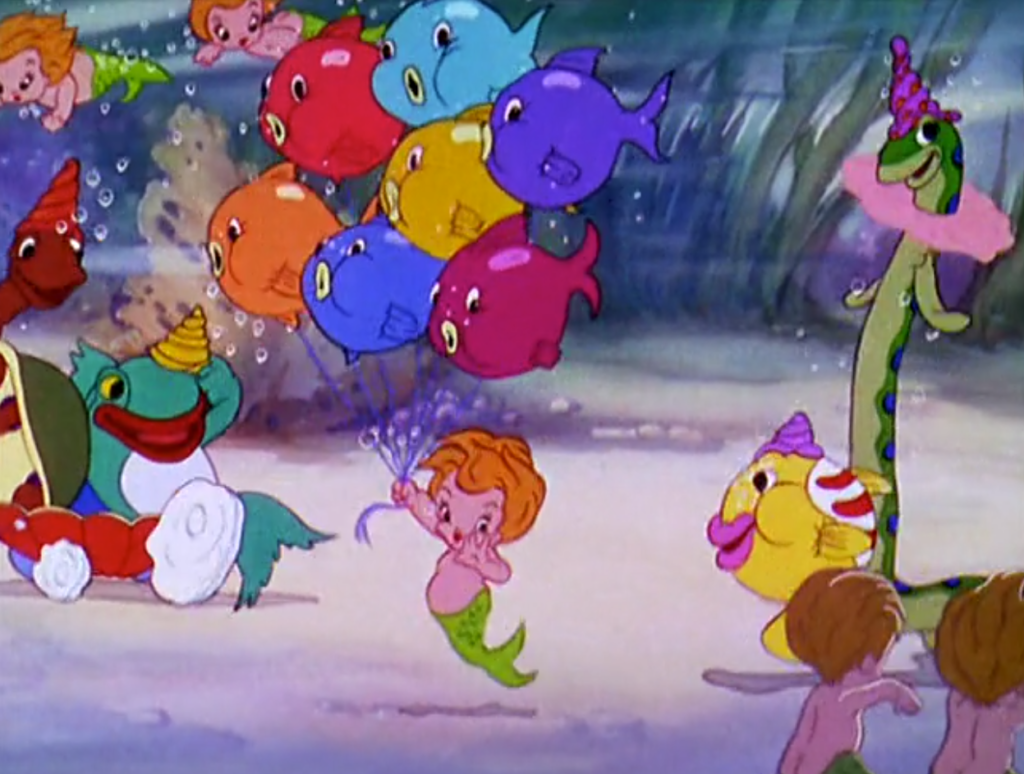
December 9, 1938 available in More Silly Symphonies
I’ve heard that this one is much loved among people who grew up watching Disney shorts from this era. It closely follows the Silly Symphony strategy of elaborate visuals, adorable characters, and complex imagery that matches a quality musical arrangement.
The Merbabies are, it seems, born of the foam of the sea. As the short progresses, we see the merbaby parade and the merbaby circus with a set of sea-going doppelgangers playing out familiar circus scenes but under water. It’s cute (and also an obvious screen-test for Pinocchio).
Mother Goose Goes Hollywood
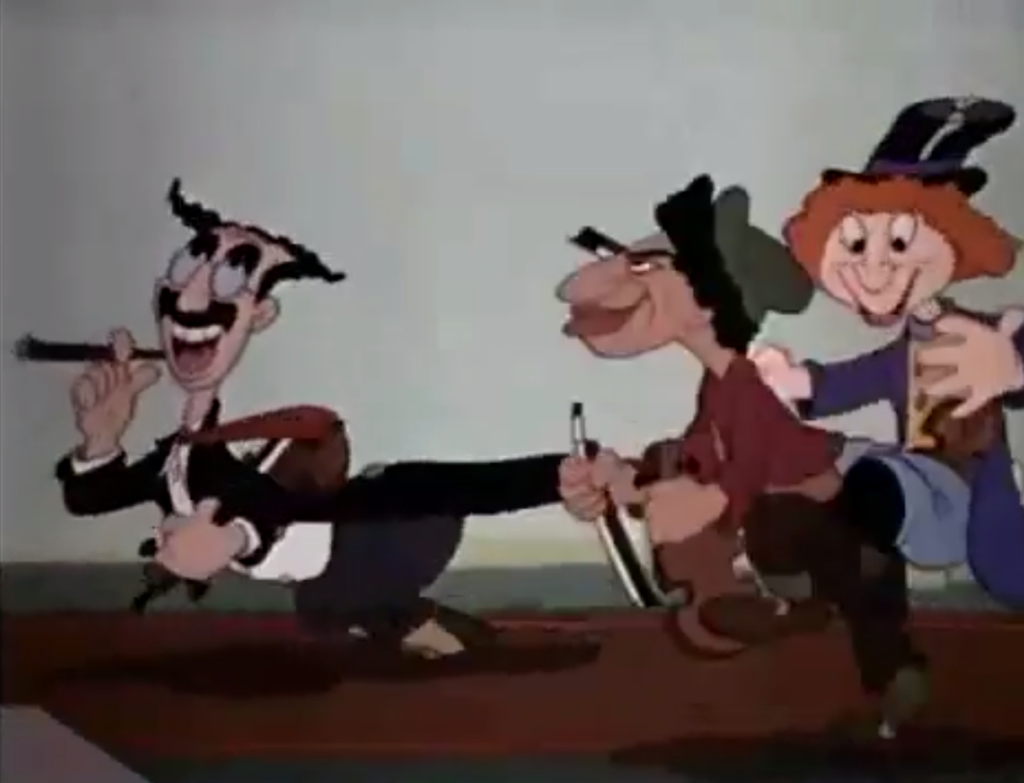
December 23, 1938 available in More Silly Symphonies
This is another one of those “let’s put a bunch of celebrities in our cartoon and hopefully those caricatures are funny”. It’s pretty cute if you know the core characters, but it ages poorly. Basically, it takes the set of 1930’s actors (Marx Brothers, Laurel and Hardy, Katherine Hepburn, Spencer Tracy, Greta Garbo, etc) and sets them in various Mother Goose stories.